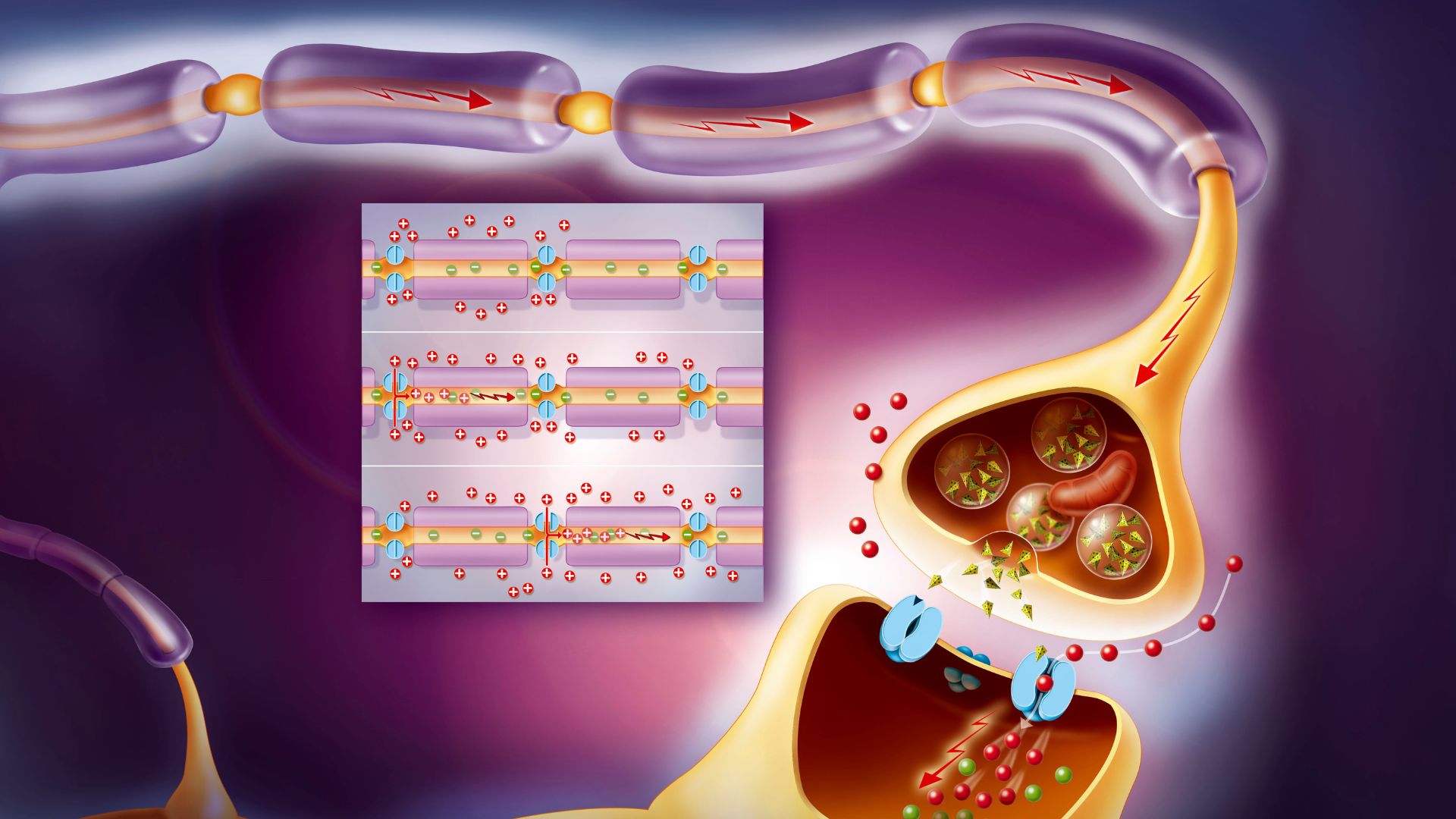
In a fraction of a second, we conjure thoughts, experience sensations and respond to our ever-changing world. Quick-fire bursts of brain activity grant us these abilities and have enabled us to outwit predators, write poetry and even contemplate the nature of our existences.
But how do brain cells send messages?
The first step in this messaging process is the action potential, or a wave of electricity triggered in the nerve cell, or neuron. The neurons found in the brain, spinal cord and rest of the body generally send messages in the same way.
Whenever there is something you need to pay attention to — for example, the sound of the doorbell — receptors in your sense organs activate nerve cells leading to the brain. Tiny tunnels in the membranes of neurons open, allowing positively charged molecules, or ions, to leak into the cell.
Related: Mysterious spiral signals in the human brain may be key to our cognition

These charged particles ripple along the cell's membrane, similar to how electrons pass through wires in electrical devices. This electrical signal travels from the cell's membrane into its axon, a long, tail-like structure that sticks out from the cell body. This axon is separated from the axon of the next nerve cell in the communication chain by a gap called a synapse.
When this electrical impulse reaches the end of an axon, the neuron releases chemicals called neurotransmitters into the synapse. The chemicals wander across the gap and stick to specific receptors on the next neuron. If enough receptors are switched on, the receiving neuron may generate its own action potential and pass the message to other neurons in the network.
Because only cells that are connected by a synapse can communicate via neurotransmitters, they can be thought of as "secret messages" detectable in that moment only by those two neurons and not the ones surrounding them, Mike Ludwig, a professor of neurophysiology at the University of Edinburgh in the U.K., told Live Science.
But neurons can also broadcast "public announcements," Ludwig said.
Neurons do this by releasing small protein fragments, called neuropeptides, through their cell membranes. Action potentials trigger neuropeptide release, but instead of traversing nanometers to the next neuron as neurotransmitters do, neuropeptides take a long voyage around the brain. Floating around the fluid that surrounds the brain, they eventually bind to receptors in distant brain regions. This type of communication is much slower than synaptic signaling, but it has far-reaching effects.
"What is important is not so much the signaling molecule itself, but the distribution of its receptor," or where it's located in the brain, Ludwig said. In animal studies, when scientists change the location and density of certain receptors, it alters animal behavior. That suggests that thoughts and actions rely not just on nerve cells that are directly connected but also on the sensitivity of different brain cells to far-reaching neuropeptides.
Take the neuropeptide oxytocin, the so-called social hormone. Oxytocin is released in the brains of prairie voles (Microtus ochrogaster) when they mate and facilitates the formation of a monogamous bond. When researchers block its receptor, the animals show less interest in pairing up. And if the receptor is overexpressed, meaning there's an unusually high number, female animals are more eager to settle down with their chosen mate.
Related: 6 interesting effects of oxytocin
Oxytocin appears to promote romantic and family relationships in humans, too. Mothers with higher levels of the hormone immediately after birth show stronger attachment to their newborns than those with lower levels, and falling in love is linked to an oxytocin surge.
Likewise, another neuropeptide, alpha-melanocyte stimulating hormone (alpha-MSH), appears to suppress appetite and stimulate sexual desire in both lab animals and people. Drugs that activate the same receptor as alpha-MSH dampen an individual's appetite for food but boost sexual appetite, suggesting that hunger and sex drive are controlled by overlapping brain circuits.
Scientists have identified more than 100 human neuropeptides that affect myriad behaviors. But scientists suspect there are many more to be uncovered, based on over 1,000 predicted peptides in the human genome.
The short- and long-distance forms of neuronal communication may interact. Emerging evidence suggests that neuropeptides play a role in synaptic plasticity, or the ability of neurons to modify how strongly they fire in response to different experiences. Synaptic plasticity forms the basis of learning — each time you study for an exam, for example, the synapses where that memory is stored become a little stronger.
Neuropeptides can also affect a neuron’s sensitivity to neurotransmitters and, in turn, affect how likely it is to generate its own action potential in response to others. It appears that the brain's "public broadcasts" can influence cells' private conversations.







